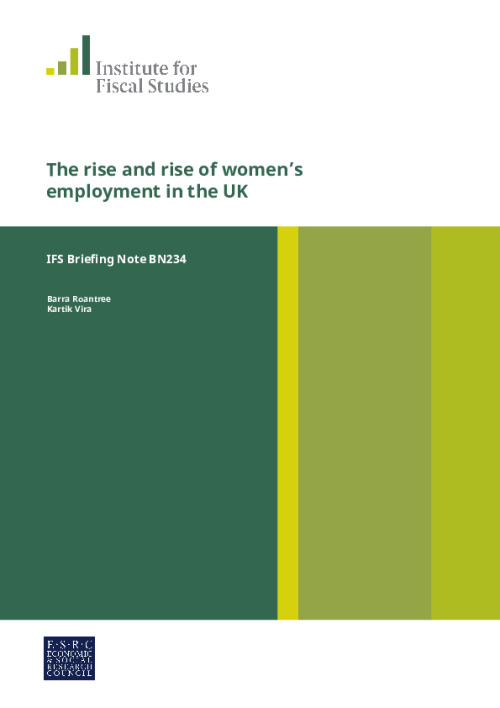Key findings
- Over the past 40 years, the UK has seen an almost continual rise in the proportion of women in employment. The employment rate among women of ‘prime working age’ (aged 25-54) is up from 57% in 1975 to a record high of 78% in 2017.
- This predominantly reflects an increase in full-time employment, from 29% in 1985 (when data on hours of work began) to 44% in 2017.
- These aggregate changes are largely the result of a huge change in working patterns at particular points in the life cycle, with far more women in employment over the course of their mid-to-late 20s and early 30s.
- This is in part because women are now cohabiting and having children both less frequently and later in life. The share of women living with a partner or spouse by age 25 has fallen from more than 80% for women born in the 1940s to less than 60% for women born in the 1970s, while the share of women born in 1975 who had given birth to at least one child by age 25 (31%) is around half that of women born in 1945 (60%).
- It is also because women are now much less likely to drop out of the labour market around the time they have their first child, and much more likely to stay in paid work in the years following. Whereas only 41% of women born in 1958 were still in work 2 years after the birth of their first child, this figure was 58% for women born in 1970 – even though the employment rates of these cohorts were essentially the same both 5 years before and 10 years after the birth of their first child.
- This has led to a large rise in the proportion of working-age mothers in paid work: up from 50% in 1975 to 72% in 2015. The rise has been particularly large among lone mothers and mothers of pre-school- and primary-school-age children.
- Overall, the proportion of couples with children where only one adult works has almost halved (down from 47% in 1975 to 27% in 2015) and the proportion where both work has increased from 49% to 68%.
- Increases in maternal employment have been largest among the partners of higher-earning men. 40 years ago mothers partnered with men in the bottom and top halves of the male earnings distribution were equally likely to be in paid work themselves, with employment rates of around 60%. Those figures are now around 70% and 80% respectively. In other words, for every additional mother in employment partnered with a lower-earning man, there are around two additional mothers in employment partnered with a higher-earning man.
- While employment rates for working-age women have risen nationally, London has been overtaken In 1975, London’s employment rate among women aged 25-54 was the highest in the UK, at 63%. By the mid 2000s it had been overtaken by every other region in this respect. Despite strong employment growth in recent years, in 2017 its figure of 74% was the joint-lowest in the UK, together with Northern Ireland.










